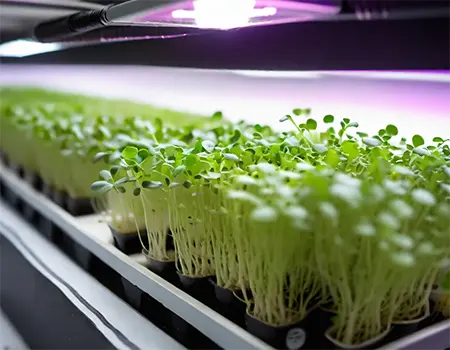Growing Microgreens in Space: Overcoming the Challenges of Microgravity
Cultivating microgreens - tiny, nutrient-rich seedlings - may seem straightforward, but space travel throws in a unique complication: microgravity. This weightless environment significantly impacts root development, hindering plant health and yield, and posing a major obstacle to sustainable food production in space missions.
The Impact of Microgravity on Roots:
Microgravity disrupts the natural growth patterns of microgreen roots, leading to stunted and thickened roots with fewer root hairs. These root hairs are crucial for efficiently absorbing water and nutrients, which is vital for plant growth. Consequently, microgreens grown in space struggle to thrive, resulting in decreased yields and potential nutritional deficiencies.
Innovative Solutions for Healthy Space Gardens:

Researchers are actively developing innovative solutions to address these challenges and cultivate healthy microgreens in space. Two promising approaches include:
Hydroponics and Aeroponics: These soil-less cultivation techniques eliminate the influence of gravity by providing direct access to water and nutrients. Imagine these systems as a readily available buffet for roots, promoting healthy development and bypassing the growth struggles imposed by microgravity.
Root Support Structures: These novel structures, made from materials like gels, foams, and grids, act as miniature scaffolds for roots. They guide roots in the desired direction, maximizing their reach for essential nutrients and mimicking the support function usually provided by soil. Think of it as physical therapy for roots, ensuring they grow strong and efficient in a weightless environment.
Understanding Microgravity Through Earth-Based Simulations:
Understanding how roots behave in microgravity is essential for developing effective solutions. Researchers utilize Earth-based simulations like parabolic flights and specialized centrifuges, which mimic the weightless environment. These tools allow scientists to observe root behavior under controlled conditions and test potential solutions before implementing them in space missions.
The Future of Space Farming: A Greener Horizon:
The challenges posed by microgravity are real, but so are the promising solutions being developed. By implementing innovative approaches like hydroponics, root support structures, and Earth-based simulations, researchers are paving the way for a future where astronauts can enjoy fresh, nutritious microgreens even in the vast expanse of space. This contributes to their overall health and well-being and paves the way for more sustainable and self-sufficient space missions.
Further reading - Microgreens are Out Of This World! - NASA and Microgreens | Flavor Fiesta or Bland Bites? | Micromanaging the Microbiome | Lights Out, Growth Slowdown

